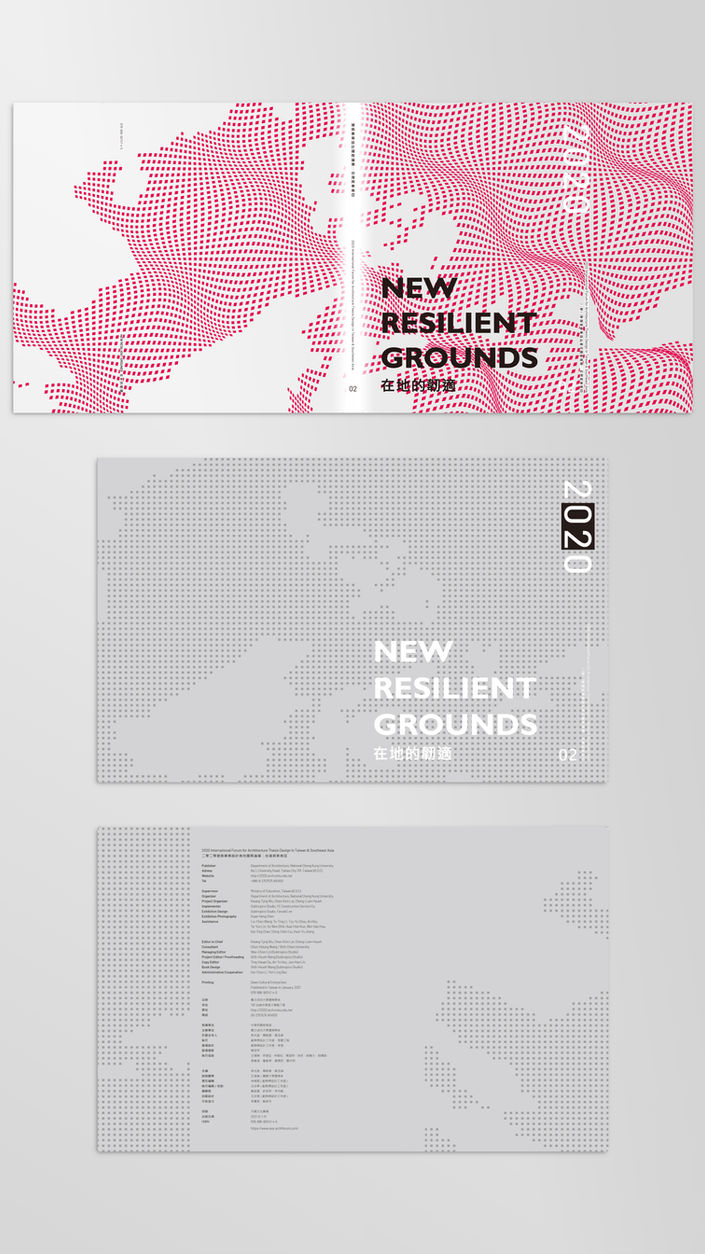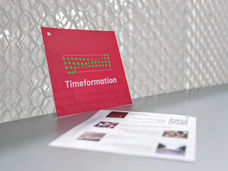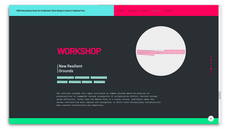
An Experimental and Multifaceted Project -
Exhibition Design
Forum Implementation
and Publication
New Resilient Ground
2020
CONTEXT
International Forum for Architecture Thesis Design in Taiwan and Southeast Asia, 2020 Fall (16 weeks)
TEAM
Wan-Chien Lin
Shih-Hsueh Wang
Jun-Han Lin (Assistant)
Hui-Chun Li (Assistant)
Advised by Professors Kwang-Tyng Wu, Chee-Kian Lai, Cheng-Luen Hsueh
ROLES
Exhibition Design
Furniture Design
Construction Supervision
Material Ideation
Forum Coordination
Visual Design
Publication Production
TOOLS
Rhino
AutoCAD
Photoshop
Illustrator
InDesign
OVERVIEW
The 2020 New Resilient Grounds exhibition invited talented students from Taiwan and Southeast Asia to share and publicly review their undergraduate architecture thesis design. Our tasks included exhibition planning, display design, and visual design, under the circumstances that overseas participants attended virtually, while Taiwan's counterparts engaged in the event physically. Undoubtedly, it is an unprecedented challenge along with the post-pandemic era. Both the organizers and participants made a great deal of effort to conquer the difficulties. Fortunately, we had shown praiseworthy outcomes and a model that everyone in the future can learn from our experience.


Multiple Layers of the Honeycomb Cardboard
(Photo credits to Kuan-Heng Chen)
Design Objectives -
Create an indefinable and fluid-like experience in space and visual design to reflect the theme - New Resilient Ground
The New Resilient Grounds evoke resilience as common grounds where we practice architectural and urban design in polyvocalities and collaborations that are allied, layered, juxtaposed, interactive, and adaptive. The projects are collected here as assemblages and reflections by 20+ universities in the Southeast Asia region on the thesis designs. They are extended on topics of changing and dynamic factors of resilience as they interact with contemporary Asia environments.
The New Resilient Grounds explore not only the “resilient”-related designs but also those dynamic social, cultural, historical, and technological practices in the built environment to suggest more flexible and adaptable design approaches and frameworks instead of fixed, disjointed, rigid models for architectural and urban design in the next generation. Five categories/subjects, including “Liquid Perception,” “Timeformation,” “Circularity and Productivity,” “Mitigation and Adaptation,” and “Interdependency” are introduced to the exam and re-frame the thesis design projects as responses in exploring the ASIA resilience, especially in-/post- pandemic outbreaks.
- Prefaced by Cheng-Luen Hsueh
Exhibition Design -
Build a poetic and aesthetic visiting experience by applying unprecedentedly experimental materials
Space and Materiality
The space for the exhibition was linear and divided by several Y-shaped structural pillars into segments that made the space not an ideal place for displaying. Our solution was to use multiple layers of honeycomb cardboard core, which is usually used as packing materials and temporary structures, to cover the pillars and form a wall-like divider with thickness but lightness.

Space before and after designed

Visitor Journey on Layout Plan
The wall not only served as a guide for the visiting route but also as an installation to display the architecture models vividly. The honeycomb cardboard core has two appealing characteristics, which are elasticity and penetrability. By placing the carboards in multiple layers, the audiences can perceive the borderless and gradually changing features in visuality when viewing the displayed works in different positions with different see-through levels.
Interestingly, its elastic nature creates an impression of something constantly growing based on the law of gravity, which exactly demonstrates the topic, "New Resilience."

Honeycomb cardboard cores as spatial materials
Device Design for Displaying
Due to pandemics' impact, we noticed that Southeast Asia students are extremely familiar with online presentations and video-based project displays. In contrast, students of Taiwan are lack practice in a virtual mode when Taiwan was not intruded by the virus yet back in 2020. Given this phenomenon, “New Resilient Grounds” aims to build a conversational platform for all the participants from various places in a hybrid model, such as displaying projects through thoroughly designed films that shows how the artists and designers expect the audiences to understand the projects, rather than a heavy pile of text and still graphics in a conventional way. Therefore, we devised groups of reusable displaying boards consisting of metal structures and fabric skins with cork boards inside that allow pinning any drawings and installing suspended wires for holding tablets.

Customized reusable pin-up device for drawing sheets

Displaying device design sketches
Signage Design
The entrance signage is the first object visitors would see in the exhibition. Hence, it indicated the information and conveyed the concept of the theme of the event through the key colors and patterns of the visual design. The highlights of the design were layering four hung translucent acrylic panels with patterns on them to show the hierarchy of the fluidity, which was lightened up by LED strips with three primary colors, and the signage was constructed with sandblasted iron tubes in an elegant structure.

Entrance signage design
Visual Design -
Ocean, fluidity, and resilience are our common language and value
Visual Communication
The primary visual element was developed from the world map of Taiwan and the five participating countries in Southeast Asia. As themed as the visual fluidity, we shifted the pattern fillings into the ocean part as a figure-ground diagram so that the twisting effect can be obviously seen. On the contrary, it is barely shown transformation in the continental area, which indicates a vital fact: we shared a common value of oceanic culture, which bred lives that found ways to build up thriving civilizations after struggling with limited resources and lands.
Main visual design
Printed and Graphic Design
For publicizing the event both online and offline, we dedicated ourselves to building a website and creating printed matters, such as posters, brochures, and flyers. We went through all the graphic designs based on the developed key visual elements.

Printed matters design
Website Design
The website was meant to be an event page that included information about curators' statements, keynote speaker and panelists' bio, exhibited projects' brief, and the agenda.

Sea-archiforum
(https://www.sea-archiforum.com)
Forum Execution -
A compact event ranging from keynote speech, symposium, project review, and workshop
It was a three-day event inviting professionals from academia and the industry of architecture, urban planning, and innovative design to share their research and contribution to improving the natural environment. Curators selected promising student theses relevant to environmental issues, divided them into five categories to be reviewed by the invited specialists from overseas. The current students participated in the workshop led by selected graduated students in groups to propose a design statement concerning how spatial design balances human development and environmental protection.
Event documentation
Publication -
An annual collection including professionals' research and selected student thesis designs
We adopted a perfect bound for binding with a PVC translucent dust jacket in terms of the cover design. The outer cover was printed with the twisted map, and the inner cover was printed with an original one. When two covers were overlapped, it showed the hierarchy that seemed like an ocean wave in movement. Layering corresponded to the primary design approach, including the use of honeycomb cardboard cores and the signage for the exhibition, the main visual design for the printed matter and website. Hence, as the designers and implementers of the New Resilient Ground, the publication documented and concluded the work we dedicated to this multifaceted event.
Book Design

Cover design
























